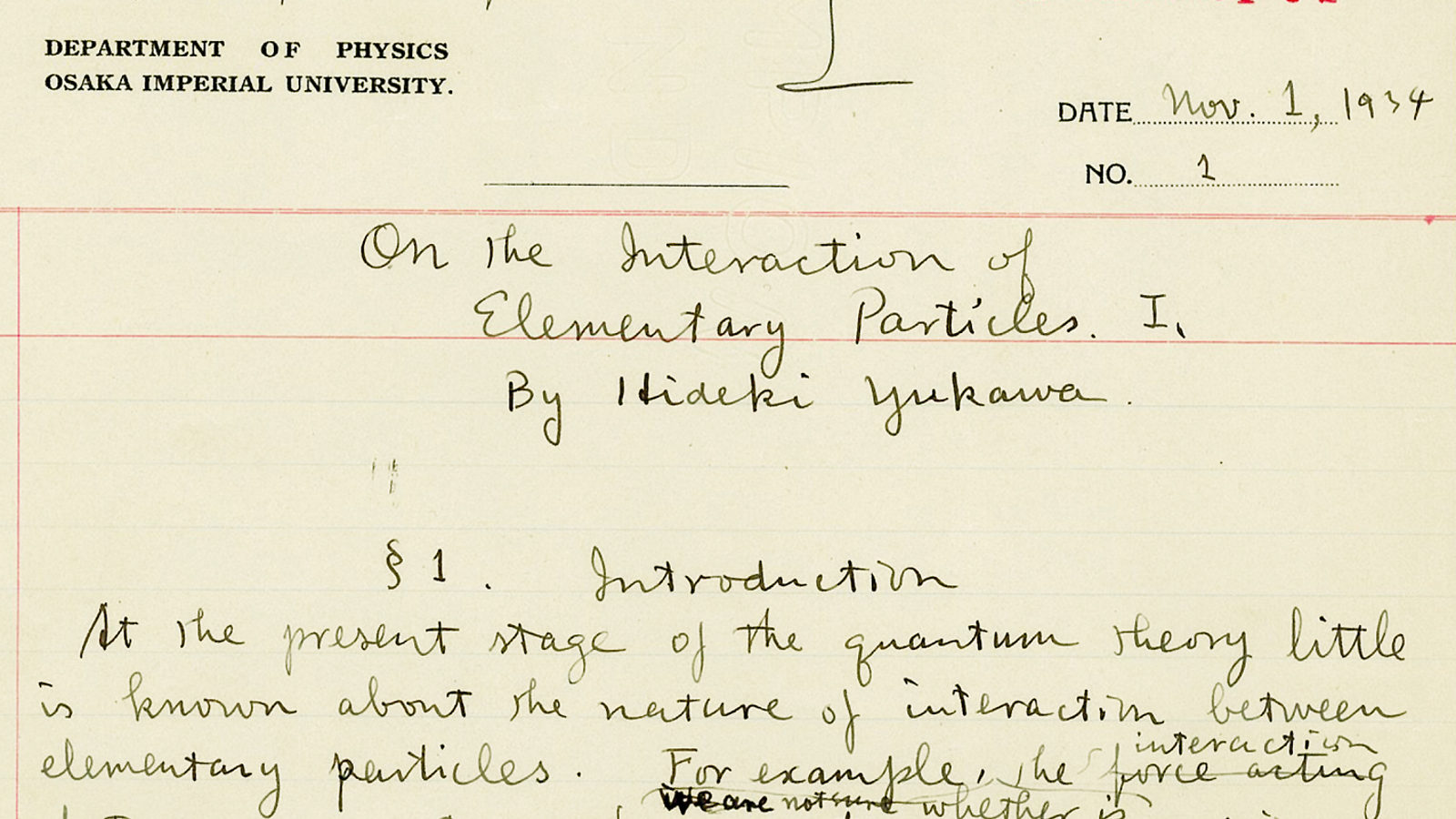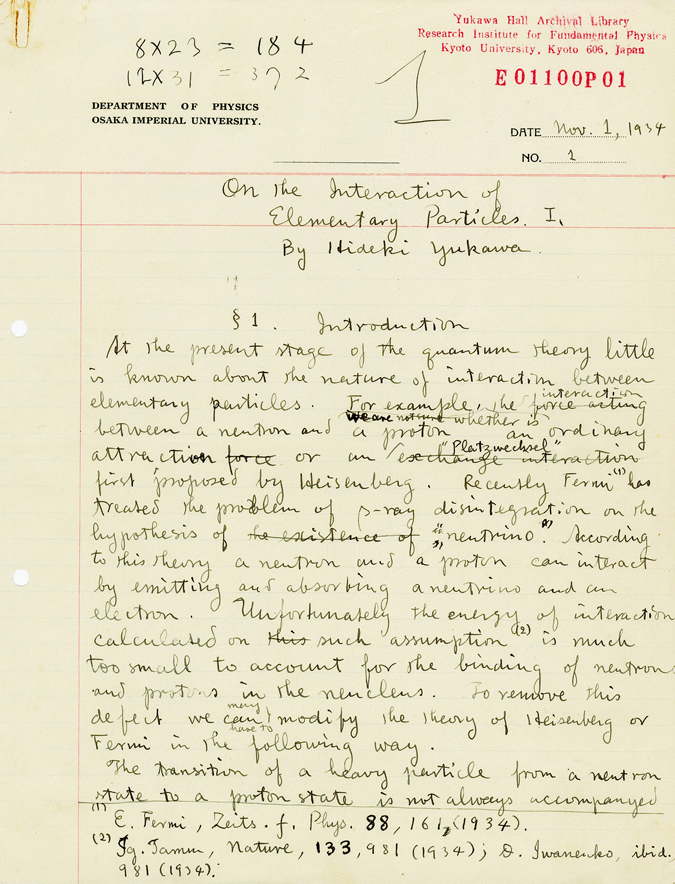Only 27 years old, Yukawa set out to explain the force that binds together protons and neutrons, forming atomic nuclei. Enrico Fermi, Werner Heisenberg, and other well-known physicists had tried to solve the problem, but their attempts had come up short. Yukawa, assistant professor at Osaka University, used the quantum field theory of electrons and photons as his starting point. He modified the theoretical description of the electromagnetic field to yield short-range forces, in agreement with nuclear experiments.
Yukawa proposed the existence of a new subatomic particle that weighs more than an electron but less than a proton. This particle, later named a meson (after the Greek word mesos for “middle”), mediates the nuclear force among the protons and neutrons inside a nucleus. (Physicists discovered later that protons, neutrons, and mesons are made of more fundamental building blocks named quarks, held together by gluons.)
In his paper, published in the Proceedings of the Physico-Mathematical Society of Japan, Yukawa predicted that cosmic rays with sufficient energy could produce the new particle outside a nucleus. In 1947, Cecil Frank Powell and his group at the University of Bristol found the pi meson, or pion, a particle about 270 times heavier than the electron. Two years later, Yukawa became the first Japanese person to receive the Nobel Prize. Powell received the award for his work in 1950.








